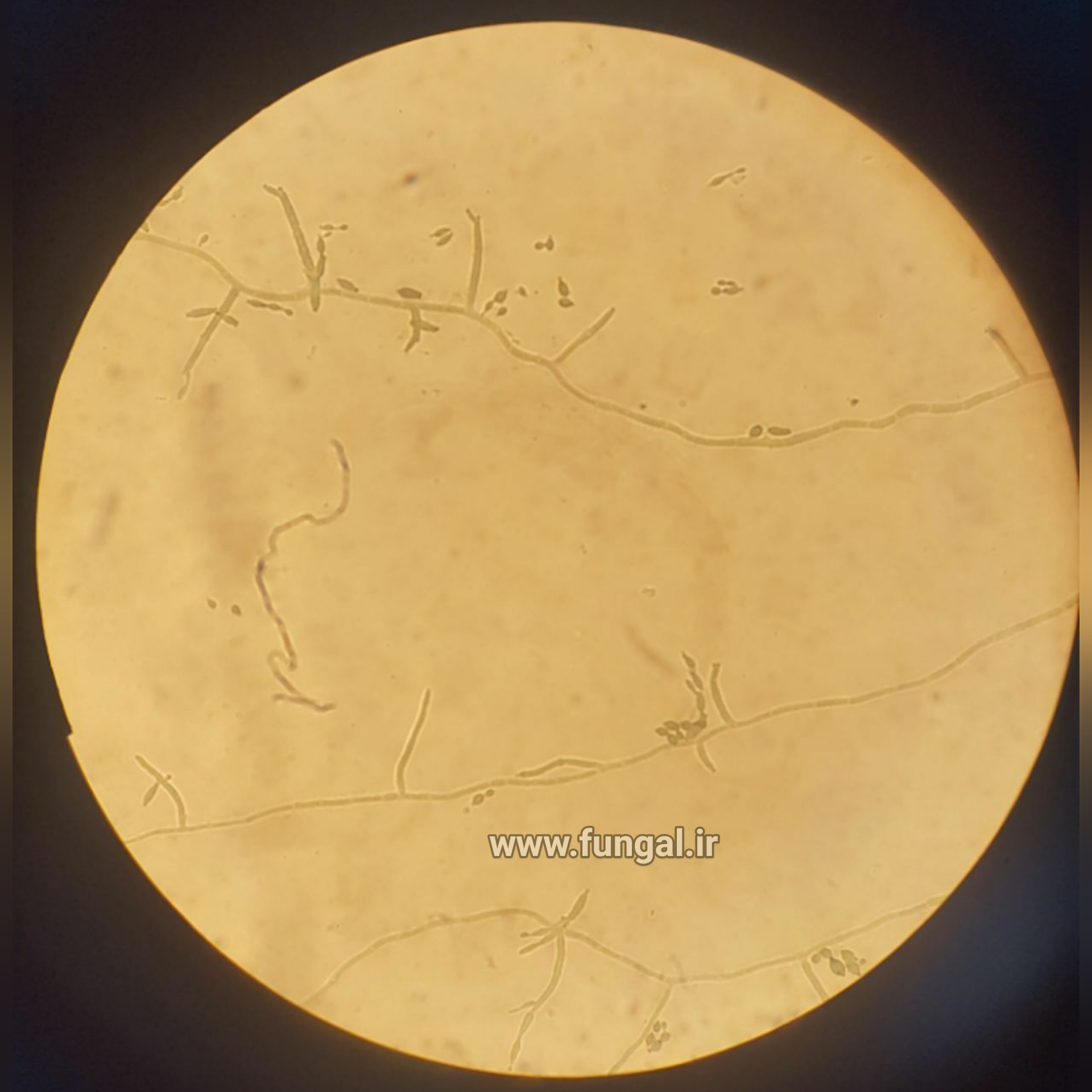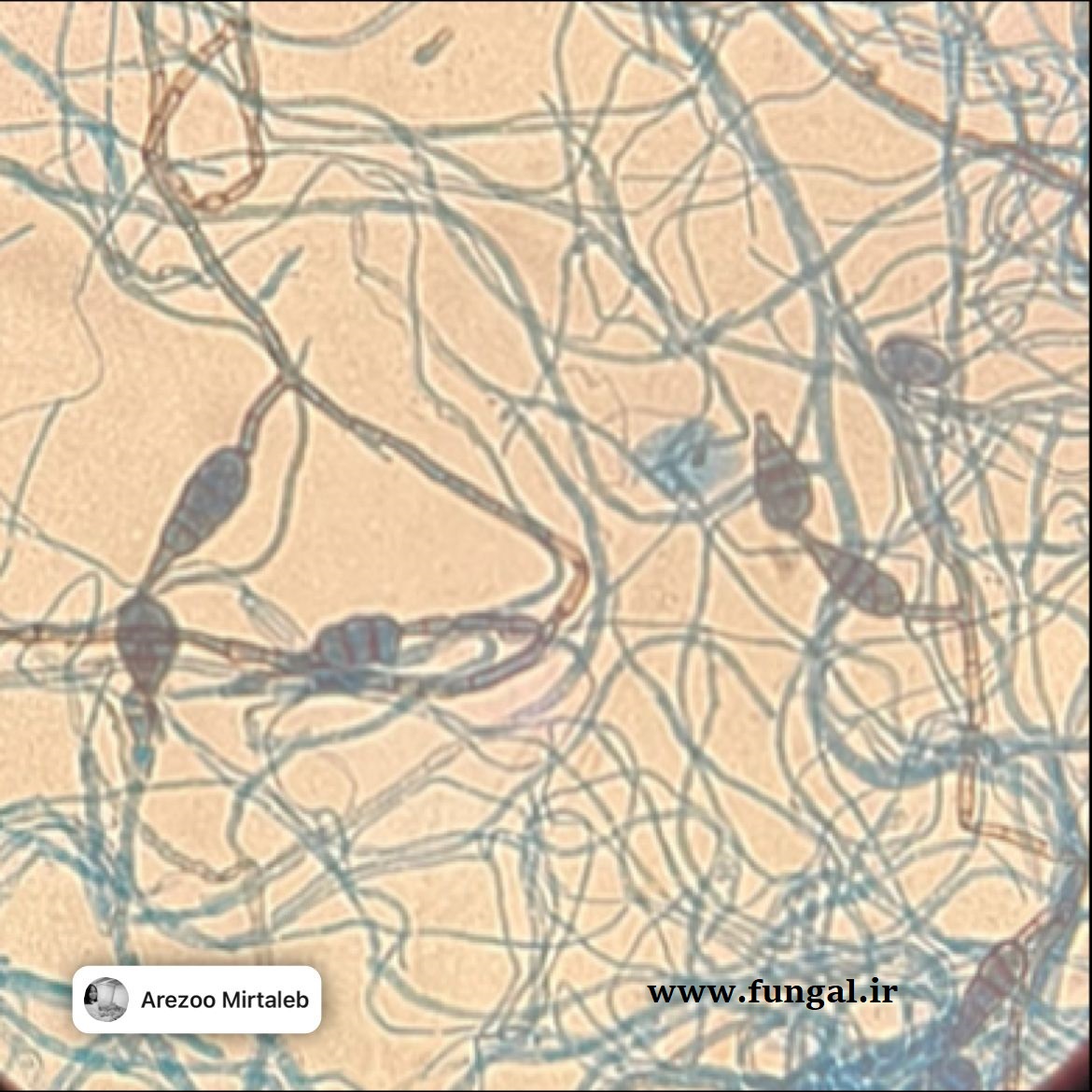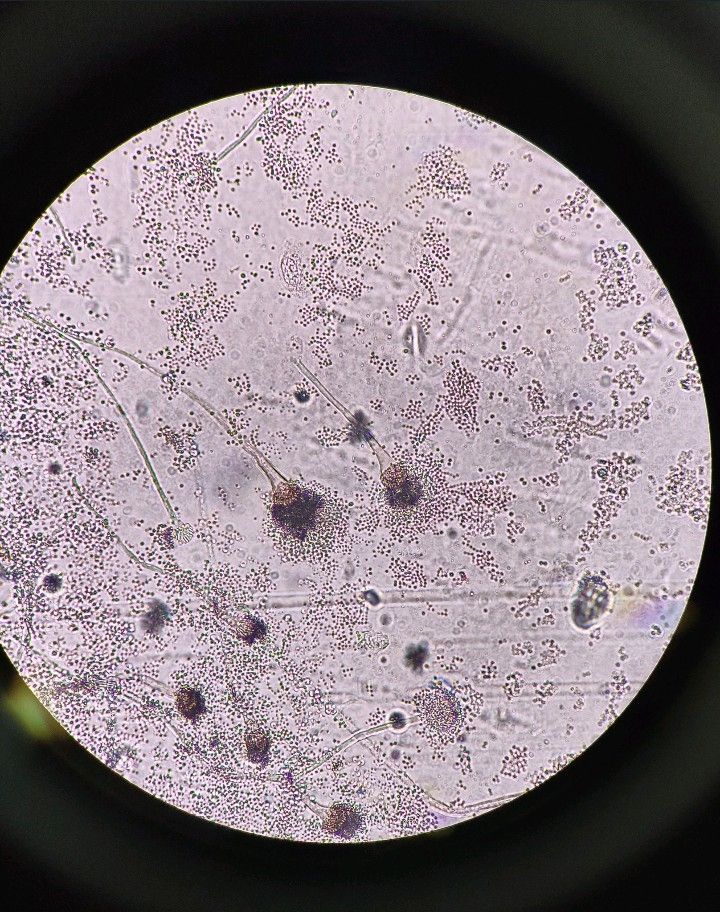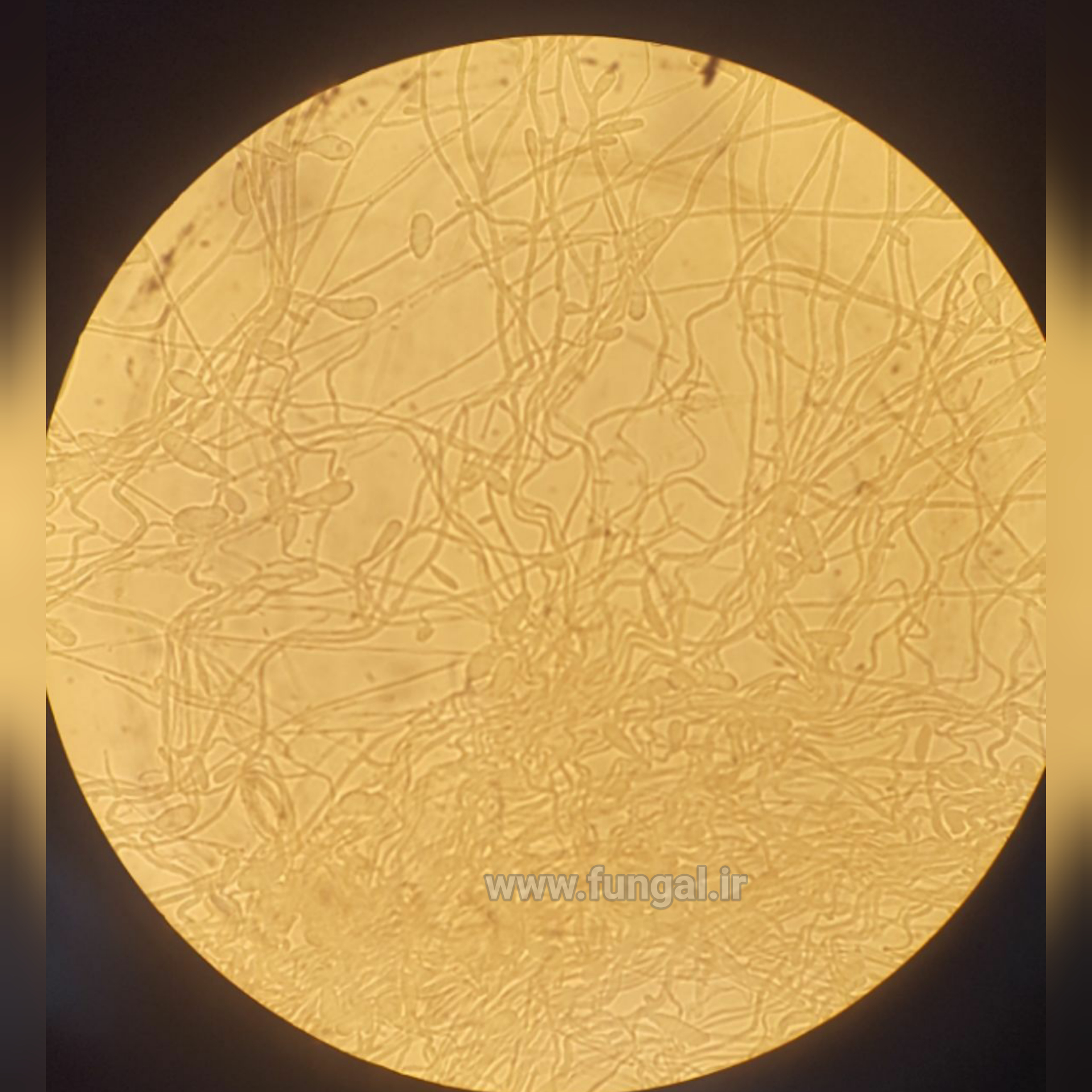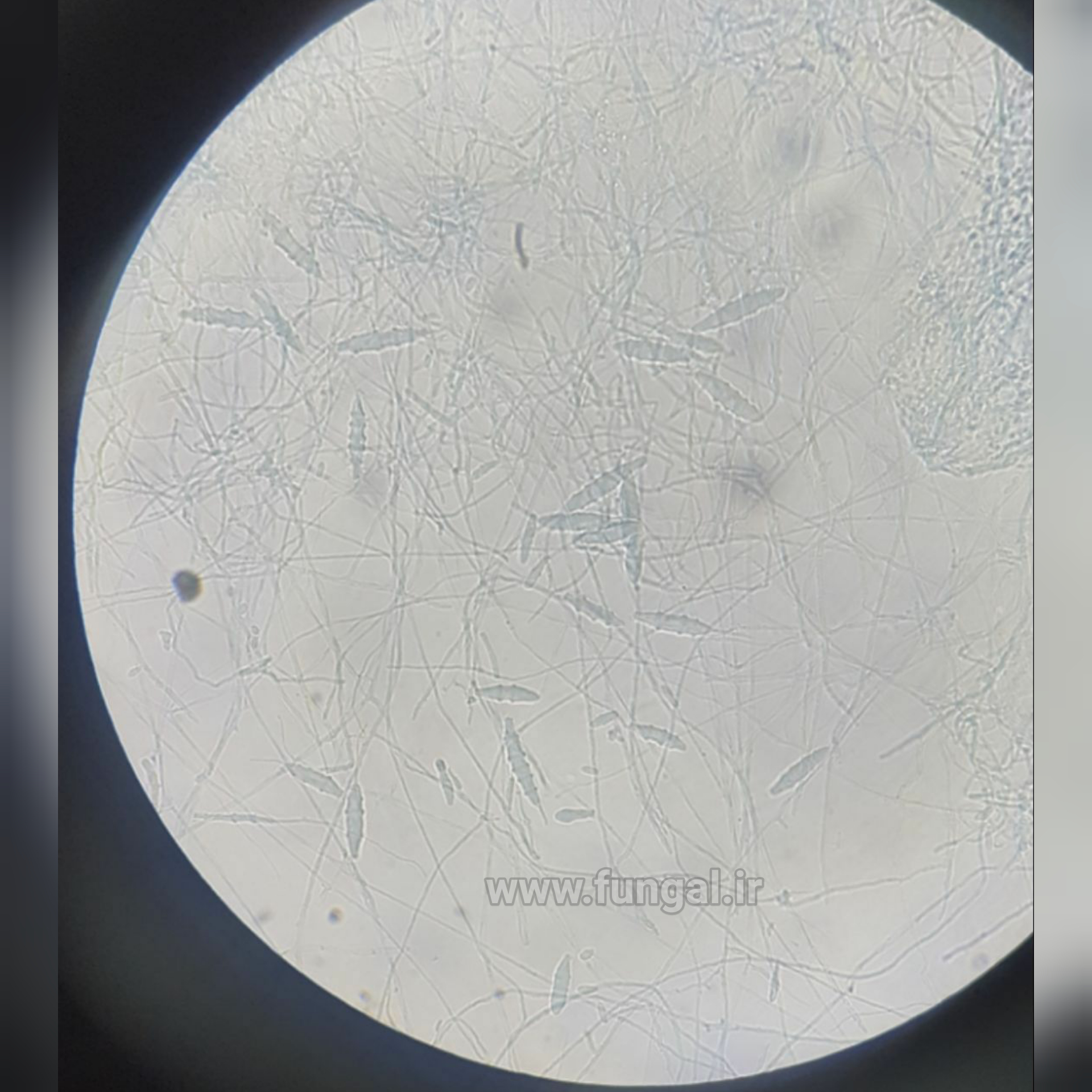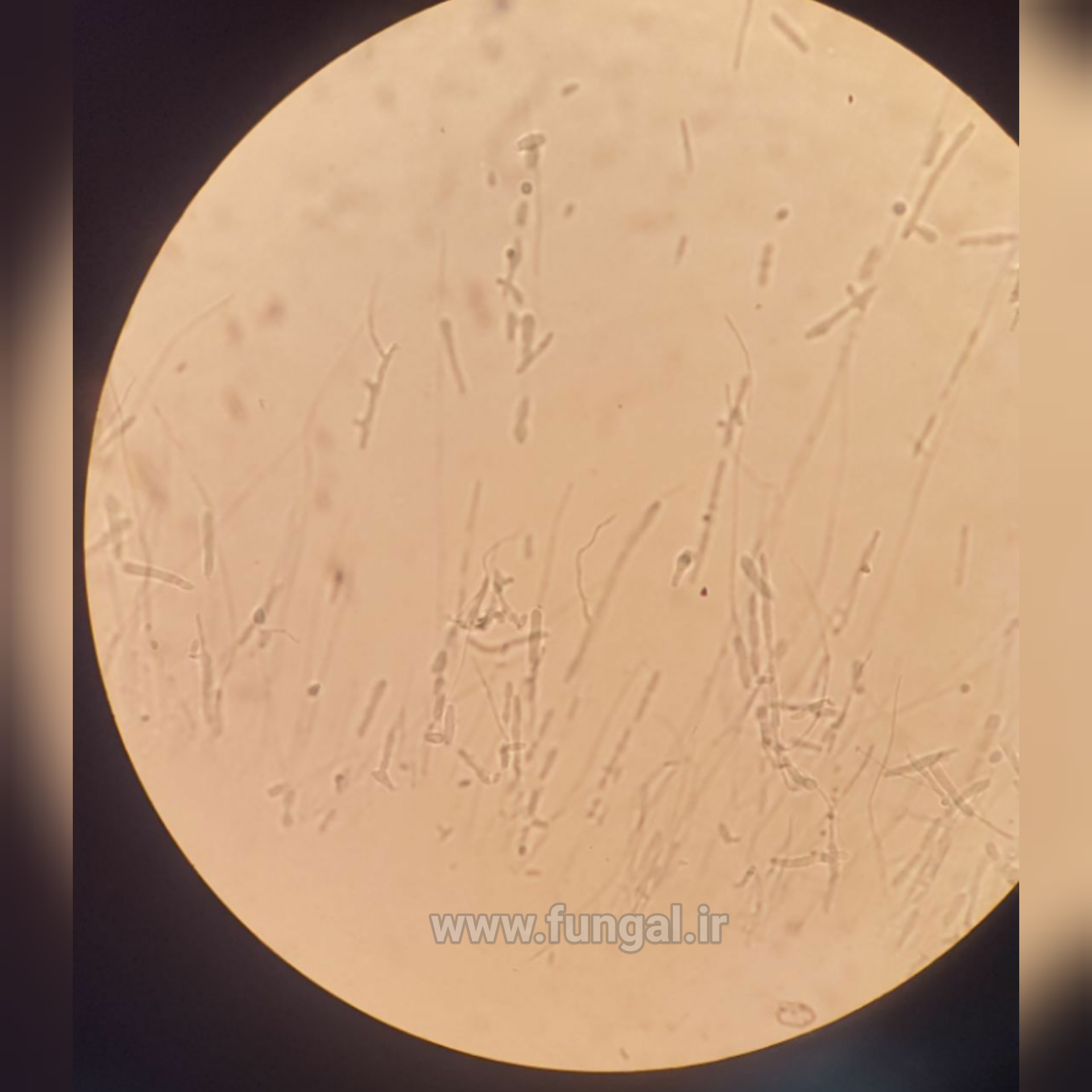Cladosporium is a genus of fungi including some of the most common indoor and outdoor molds. Species produce olive-green to brown or black colonies, and have dark-pigmented conidia that are formed in simple or branching chains. Many species of Cladosporium are commonly found on living and dead plant material. Some species are endophytes[2] or plant pathogens, while others parasitize fungi. Cladosporium spores are wind-dispersed and they are often extremely abundant in outdoor air. Indoors Cladosporium species may grow on surfaces when moisture is present. Cladosporium fulvum, cause of tomato leaf mould, has been an important genetic model, in that the genetics of host resistance are understood.[3] In the 1960s, it was estimated that the genus Cladosporium contained around 500 plant-pathogenic and saprotrophic species,[4] but this number has since been increased to over 772 species.[5] The genus Cladosporium is very closely related to black yeasts in the order Dothideales.[4] Cladosporium species are often highly osmotolerant, growing easily on media containing 10% glucose or 12–17% NaCl.[4] They are rarely grown on media containing 24% NaCl or 50% glucose and never isolated from medium with 32% NaCl or greater.[4] Most species have very fragile spore chains, making it extremely difficult to prepare a mount for microscopic observation in which the conidial chains are preserved intact.[6]
...........Mycological microscopy........
................ www.fungal.ir...............
******Please turn off the VPN******
کلمات کلیدی
Aspergillus sp
Alternaria
Rhizopus
Candida albicans
Aspergillus fumigatus
Cladosporium
Penicillium
Microsporum canis
Aspergillus niger
Trichophyton schoenleinii
Scopulariopsis
conidiospores
Saccharomyces cerevisiae
candida
Aspergillus flavus
Fusarium
Mucor
Trichophyton rubrum
Trichophyton mentagrophytes
Trichophyton interdigitale
Epidermophyton floccosum
Trichophyton verrucosum
Microsporum gypseum
Actinomycotic mycetoma
Eumycotic mycetoma
Cryptococcus neoformans
Malassezia spp
پیوندهای روزانه
